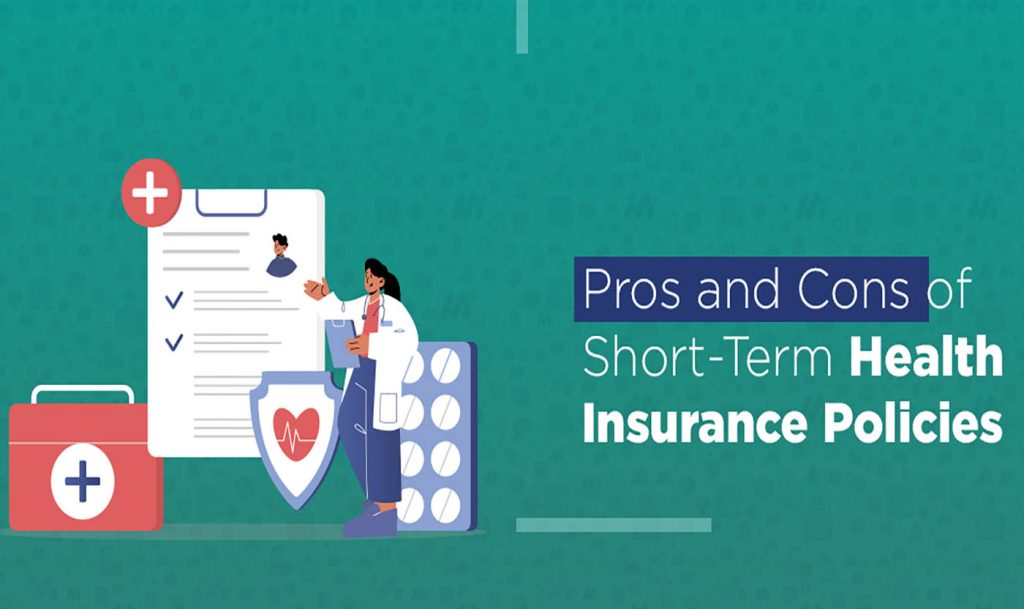Navigating health insurance in 2025 often feels like trying to read an ever-changing map. I still remember the anxiety during my first gap in coverage between jobs in New York. My mind raced: what if something unexpected happened? That’s when I discovered short-term health insurance, a temporary, flexible solution for travelers, freelancers, and anyone in transition. Over the past year, I have explored multiple short-term plans, compared them with ACA-compliant insurance, and personally assessed their strengths and weaknesses. Here, I’ll walk you through everything I’ve learned about short-term health insurance in 2025, sharing insights, examples, and practical tips.
Understanding Short-Term Health Insurance
Short-term health insurance (STHI) is designed to fill temporary gaps in coverage. Unlike ACA-compliant plans, these policies are generally limited in duration—typically one to four months—and offer rapid enrollment with minimal requirements. When I first looked into STHI, I was surprised at how quickly coverage could start, sometimes as early as the next day.
STHI primarily covers unexpected medical events rather than routine care. Typical coverage includes:
- Emergency care: Urgent situations such as accidents or acute illnesses.
- Doctor visits: Non-preventive consultations for illness or injury.
- Hospitalization: Coverage for inpatient services, often with limits.
- Surgery: Medically necessary procedures, though exclusions often apply.
- Limited prescription coverage: Some plans cover generic medications, but comprehensive prescription coverage is rare.
I quickly learned that STHI does not cover preventive care, maternity services, mental health, substance abuse treatment, or pre-existing conditions. That’s a key distinction from ACA plans, which are more comprehensive and offer consumer protections.
How I First Experienced Short-Term Health Insurance
I remember my first experience vividly. Between leaving a temporary position and starting a full-time role, I had a two-month gap without coverage. Initially, I considered skipping insurance to save money. Then I realized how risky it would be: an emergency ER visit could cost thousands. After some research, I purchased a short-term plan through eHealthInsurance (www.ehealthinsurance.com), and coverage began the very next day. This immediate protection allowed me to travel, attend medical appointments, and focus on settling into my new routine without constant anxiety.

The Benefits I’ve Experienced
Short-term health insurance has several advantages I’ve personally appreciated:
- Affordability: Premiums can start at under \$100 per month. For someone like me, transitioning between jobs, it was a financially viable option.
- Immediate coverage: Rapid approval means no waiting weeks for protection. I remember enrolling at 3 PM, and by the next morning, I was fully covered.
- Flexibility: Plans can be canceled or adjusted based on personal circumstances, offering more freedom than annual policies.
- Temporary solution: Ideal for bridging gaps between jobs, waiting for ACA enrollment, or transitioning out of employer-provided insurance.
- Access during travel: While visiting family across states, the plan covered a sudden ER visit after a minor accident, saving me hundreds in unexpected expenses.
Limitations I’ve Encountered
Despite its benefits, STHI has limitations that I learned to navigate:
- Exclusion of pre-existing conditions: Chronic conditions like diabetes, hypertension, or high cholesterol are not covered. I know friends who found themselves fully paying for routine treatments due to this limitation.
- No preventive care: Routine checkups, vaccines, and screenings are excluded.
- Limited mental health coverage: Therapy sessions, counseling, or psychiatric treatments are rarely included.
- Temporary duration: Plans expire after a few months, requiring careful timing and planning.
These limitations meant I had to strategically plan my coverage periods, especially when transitioning jobs or traveling abroad.
Costs and Financial Considerations
Premiums for short-term plans vary based on age, location, and coverage levels. I noticed younger, healthier individuals generally pay less, while older adults or those in higher-cost states face higher premiums. Deductibles and out-of-pocket expenses can also affect financial exposure.
For example, I compared three plans using HealthMarkets (www.healthmarkets.com) and found that one plan offered a lower premium but had a high \$5,000 deductible, while another had a higher premium but covered emergencies with minimal co-pays. After evaluating my health status and travel plans, I chose the latter.
Optional add-ons like dental or vision coverage are available, but I personally weighed the costs versus likelihood of using them. Using online comparison tools like Policygenius (www.policygenius.com) helped me find the optimal balance of cost, coverage, and flexibility.
State Regulations in 2025
State laws significantly affect the availability and duration of STHI. For instance, California, New York, and Massachusetts have banned these plans, while other states allow coverage up to three or four months. I learned to always check my state’s insurance website before purchasing, which prevented wasted time and denied applications. Illinois also enacted stricter rules in early 2025, restricting plan renewals beyond a few months.
Being aware of state-specific rules helped me avoid pitfalls, especially when planning trips to multiple states. I relied on Kiplinger Health Insurance Guides (www.kiplinger.com) to track current legislation and updates for each state.
Comparing Short-Term Insurance with ACA Plans
The differences between STHI and ACA plans are striking:
- Coverage scope: ACA plans cover preventive care, maternity, mental health, chronic conditions, and more. STHI focuses on urgent and unexpected medical events.
- Cost: ACA plans may be more expensive without subsidies but offer financial protection against catastrophic events. Short-term plans are more affordable but come with higher personal financial risk.
- Pre-existing conditions: ACA guarantees coverage; short-term plans generally exclude them.
- Enrollment: ACA has limited enrollment windows; short-term insurance is available year-round.
When I navigated a transition between jobs, STHI provided immediate coverage that ACA plans could not offer at that moment, though I planned to enroll in ACA later for comprehensive, long-term protection.
Who Should Consider Short-Term Health Insurance
Based on my personal experience and conversations with others, short-term plans are ideal for:
- Recently unemployed individuals without COBRA or ACA subsidies
- Recent graduates transitioning into employment
- Travelers seeking domestic short-term coverage
- Retirees under 65 waiting for Medicare eligibility
However, those with chronic conditions, ongoing mental health needs, or expecting maternity care are better served by ACA plans or Medicaid/CHIP. During my research, I found that ignoring this advice led some acquaintances to face unexpected medical bills.
Tips From My Personal Experience
Over the years, I’ve developed strategies for using short-term insurance effectively:
- Evaluate your health risk: Young and healthy travelers may save money; those with pre-existing conditions need to plan carefully.
- Check state laws: Availability and restrictions vary; always verify compliance.
- Compare multiple providers: Platforms like eHealthInsurance, HealthMarkets, and Policygenius allow side-by-side plan comparison.
- Understand exclusions and deductibles: Read the fine print to avoid unpleasant surprises.
- Bridge coverage strategically: Align enrollment to avoid periods without coverage, especially when switching jobs or waiting for ACA enrollment.
These practices allowed me to travel, work, and live confidently without worrying about unexpected medical emergencies.
Alternatives to Short-Term Health Insurance
Short-term insurance is not the only option. Alternatives I considered include:
- ACA Marketplace Plans: Full coverage with subsidies, ideal for long-term protection.
- COBRA: Continuation of employer coverage, higher cost but comprehensive.
- Medicaid / CHIP: State-based low-cost options for eligible individuals.
- Direct Primary Care: Membership-based primary care access, suitable for healthy individuals needing routine checkups without insurance.
While exploring these, I appreciated having STHI as a flexible interim solution while waiting for ACA enrollment.
Real-Life Scenarios
During a short-term plan, I fractured my wrist while hiking. The insurance reimbursed my ER visit and follow-up care. I realized that without STHI, this event would have resulted in thousands of dollars in out-of-pocket expenses. Friends who skipped short-term insurance later faced costly emergency bills, reinforcing my belief in its practical value.
Recommended Platforms for Comparison and Purchase
From personal experience, I trust the following platforms for comparing short-term health insurance:
- eHealthInsurance (www.ehealthinsurance.com)
- HealthMarkets (www.healthmarkets.com)
- Policygenius (www.policygenius.com)
- Kiplinger Health Insurance Guides (www.kiplinger.com)
- NerdWallet Health Insurance (www.nerdwallet.com)
These websites offer detailed policy comparisons, financial analysis, and real user feedback, helping me select plans with confidence.
Planning Ahead With Short-Term Health Insurance
The key lesson I’ve learned is to approach STHI strategically. Knowing coverage limits, exclusions, state laws, and timing ensures temporary insurance bridges gaps without exposing me to unexpected risks. By combining third-party comparisons with personal experience, I’ve navigated coverage gaps, traveled safely, and managed my finances effectively.

Scenarios That Highlight Its Importance
- Job Transition: Covering a three-month gap between contracts prevented exposure to catastrophic medical bills.
- Domestic Travel: While moving between states, a short-term plan covered a sudden illness during a weekend trip.
- Temporary Relocation: Friends using STHI while waiting for employer coverage in another state avoided lengthy enrollment delays.
These scenarios demonstrate that STHI can serve as a financial safety net when time and circumstances make traditional plans inaccessible.
Short-term health insurance in 2025 is a practical, flexible, and cost-effective option for people in transition. My personal journey navigating gaps in coverage, understanding exclusions, and comparing providers has shown me that these policies, while not comprehensive, are invaluable for certain circumstances.
For anyone considering short-term coverage, taking the time to understand state regulations, plan details, and personal risk factors is essential. With careful planning, STHI can provide peace of mind, allowing travel, job transitions, and life’s unpredictabilities to be handled with confidence.



